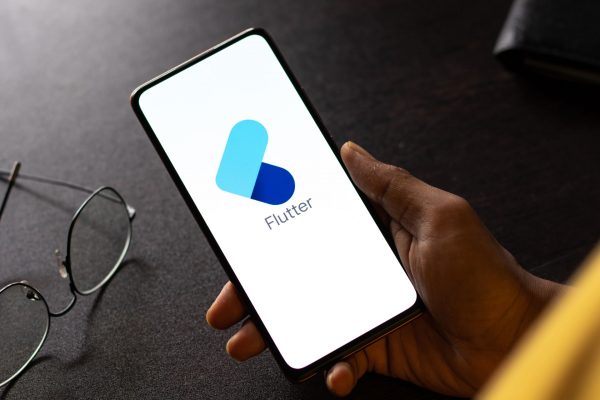In 2022 alone, 255 billion mobile apps were downloaded. Today, they play a significant role in the retail and e-commerce sector. A well-designed mobile app can help you increase UX and keep your customers engaged for a long time. How so? In this article, we’re going to take a look at how mobile apps drive user engagement and loyalty.
The number of downloaded mobile apps grows every year. And that’s not surprising; mobile apps can be used to make our lives easier, to help us deal with everyday tasks, and even streamline the purchasing process. No wonder customers around the world are so eager to use them:
Source: https://www.statista.com/statistics/271644/worldwide-free-and-paid-mobile-app-store-downloads/
The role of mobile apps in retail
Retail has always been a very competitive sector. With so many products on the market and so many both offline and online stores, players in this sector need to up their game and offer stellar purchasing experiences. Especially given that almost 60% of e-commerce spending is attributable to mobile phones:
Source: https://datareportal.com/reports/digital-2023-global-overview-report
Today, retail mobile apps are super-advanced shopping hubs enabling users to:
- Browse the entire store’s offer
- Order products online and pick them up in a selected store or ask for a courier delivery
- Talk to customer service or virtual shopping assistants (chatbots and voicebots)
- Participate in loyalty programs
- Stay in touch with company (e.g., via mobile push notifications) and be informed about the latest arrivals and special offers
- Order products that are currently out-of-stock
- And more!
New trends in retail mobile apps
Personalization
This trend has been around for quite some time now, but its significance cannot be overrated. Today, mobile apps offer personalization that does more than just greet the user by their first name. Mobile apps can have access to your store’s database and use this data to personalize messages and offers displayed to different customers.
For example, if you run a sporting goods store, and you have a customer who usually buys tennis equipment, such a person can see tennis-related products on their main screen because that’s what you know they are interested in.
Personalization makes your customers feel well taken care of and important to the company. This, naturally, contributes to higher CX (customer experience) and drives customer loyalty.
Some time ago, our team developed a mobile app for Erli – one of the fastest-growing e-commerce platforms in Europe. Their app is not just easy to use and well-designed, but it also actively uses personalization to leave customers satisfied. The app comes with a personalized space for each user, allowing them to manage their data, settings, and consents.
Loyalty programs
They can be very effective, especially when such a program is designed to help customers gather a lot of points in a relatively short period. Loyalty programs can help you keep your users engaged for a very long time, especially when they can see real benefits. For instance, if a customer sees that participation in your program gives them free delivery (this is what Amazon does and for a reason), they will be reluctant to look for other options.
We created a mobile app with a loyalty program for Apart – a Polish chain of jewelry stores. Apart’s app gives constant access to a virtual loyalty card as well as many more benefits. The Diamond Club loyalty program allows you to explore the products available in the store’s offer, create wish lists, and make purchases in their online store.
Building community
Lastly, many retailers encourage customers to stay in touch with the store. That’s why many mobile apps have this option to talk directly to the store’s customer service staff without the need to leave the app or make a phone call. Stores can even go one step further and encourage customers to stay in touch with each other. Building a community around a product can be tricky (not every product is suitable for that) and time-consuming, but it surely can help you create lasting relations with your customers.
And speaking of making communication easy, in our app for X-kom, we embedded a quick and easy contact feature allowing every user to get in touch with the store’s staff in a matter of seconds. Store’s customers willingly use this feature when looking for the best product.
Gamification
The last trend that we want to mention is gamification. In short, it’s all about adding the element of entertainment or competition to your mobile app. The goal is, as always, to keep customers engaged for longer.
Here, Aliexpress is a good example. Their mobile app encourages users to compete for discount-earning digital coins, acquire coupons by taking part in daily tasks, and gamble for coins with instant-win games.
Source: https://www.mobindustry.net/blog/how-to-use-gamification-in-ecommerce-apps-like-aliexpress/
You can think of something similar. Perhaps it’s a good idea to add even a small gamification element to your app to make it more attractive to future users. Typically, such elements as gathering coins and other valuable items and scoreboards are very effective.
Top mobile commerce trends you must be aware of in 2023
Apart from what we’ve already discussed, there are other trends retailers need to take into account in 2023 and beyond. There are five of them:
- Chatbots: These virtual assistants can help your customers shop and get product information 24/7. When supplemented with AI and NLP, chatbots can communicate on a close-to-human level and handle up to 70% of all customer queries in your company.
- Mobile payments: Nowadays, every online store should have at least one mobile-friendly payment option. In Poland, it’s BLIK, whereas in Nort America – PayPal.
- VR/AR: Augmented/virtual reality can help your customers see products that you offer in a whole new dimension. A virtual product image can be projected on a screen or VR googles so that customers feel like they are interacting with a real-life product.
- Social commerce: Facebook, Instagram, and TikTok – all these platforms have their social commerce solutions enabling brands to offer products directly via their fanpages/profiles.
- Omnichannel: Mobile apps play a big role in the omnichannel model. Customers want to communicate with you using different tools, devices, and channels, and mobile apps help you achieve just that. They are convenient and available 24/7, making them a great addition to your omnichannel strategy.
If you’re planning a mobile app, we suggest you take all five trends into account.
How to keep customers engaged using mobile apps
The key to keeping your customers engaged lies in providing value. Customers must have a good reason to keep using your apps. That said, you can think of:
- Providing them with all the functionality they need (make sure your mobile app is as functional as your web store)
- Enabling them to gather points/discounts for every purchase and other activities (e.g., you can also reward customers for every review they publish)
And, of course, you shouldn’t forget about what we discussed earlier in this post: Personalized experiences, achieved through tailored content recommendations and notifications, play a pivotal role. Incorporating gamification elements, such as rewards, challenges, and progress tracking, fosters a sense of accomplishment and sustained interaction. Seamless user interfaces, intuitive navigation, and regular updates contribute to a positive user experience, ensuring that the app remains relevant and user-friendly.
What’s the future like for mobile apps?
We can never be 100% sure, but we can estimate that mobile apps will continue to evolve. Perhaps they will utilize artificial intelligence in an even more advanced way. Perhaps even retail mobile apps will turn into fully functional personal shopping assistants, and customers won’t even have to browse products themselves. Time will tell!
In the meantime, if you want to develop a mobile app for your business, we are at your service! Reach out today, and let’s see what we can do together.




